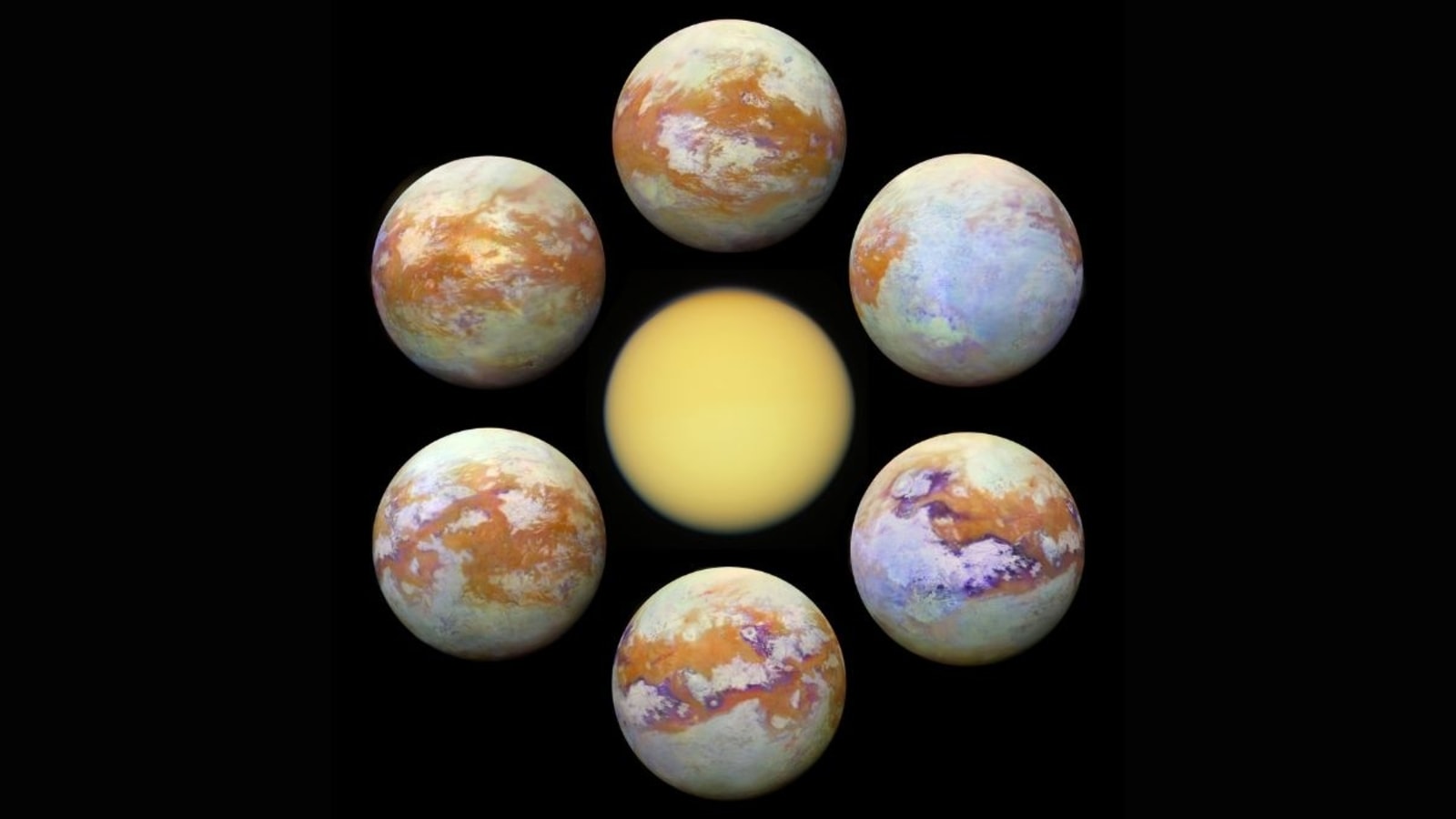NASA Astronomy Picture of the Day 31 March 2023: Saturn's moon Titan, which is bigger than Mercury
Today's NASA Astronomy Picture of the Day is a snapshot showing 6 faces of Titan, Saturn's largest Moon.

Titan, the biggest moon of Saturn, is the second largest moon in our solar system. It is an icy celestial body concealed by a golden hazy atmosphere. According to NASA, only Ganymede, the moon of Jupiter, is bigger than Titan. Titan is more massive than Earth's moon and exceeds the size of the planet Mercury. Moreover, Titan is the only moon in the solar system with a dense atmosphere, and it's the only world besides Earth that has standing bodies of liquid, including rivers, lakes and seas, on its surface, as per NASA.
Today's NASA Astronomy Picture of the Day is a snapshot showing 6 faces of Titan. Titan has a radius of about 2575 kilometers and is nearly 50 percent wider than Earth's moon. Saturn's icy moon is about 1.2 million kilometers away from Saturn, which itself is about 1.4 billion kilometers from the Sun.
Although it is hard to view Titan with its shrouded icy atmosphere, it was captured by NASA's Cassini spacecraft while orbiting Saturn from 2004 to 2017.
NASA Tech used to capture Saturn
The image was captured using the Visual and Infrared Mapping Spectrometer (VIMS) aboard the Cassini spacecraft. According to NASA, VIMS was two cameras in a single instrument: one measured visible wavelengths, the other measured infrared, and they helped scientists study the composition of Saturn's ring and moons, and the atmospheres of Saturn and Titan, among other things.
NASA's description of the picture
Shrouded in a thick atmosphere, Saturn's largest moon Titan really is hard to see. Small particles suspended in the upper atmosphere cause an almost impenetrable haze, strongly scattering light at visible wavelengths and hiding Titan's surface features from prying eyes. But Titan's surface is better imaged at infrared wavelengths where scattering is weaker and atmospheric absorption is reduced.
Arrayed around this visible light image (center) of Titan are some of the clearest global infrared views of the tantalizing moon so far. In false color, the six panels present a consistent processing of 13 years of infrared image data from the Visual and Infrared Mapping Spectrometer (VIMS) on board the Cassini spacecraft orbiting Saturn from 2004 to 2017. They offer a stunning comparison with Cassini's visible light view. NASA's revolutionary rotorcraft mission to Titan is due to launch in 2027.
Catch all the Latest Tech News, Mobile News, Laptop News, Gaming news, Wearables News , How To News, also keep up with us on Whatsapp channel,Twitter, Facebook, Google News, and Instagram. For our latest videos, subscribe to our YouTube channel.




























